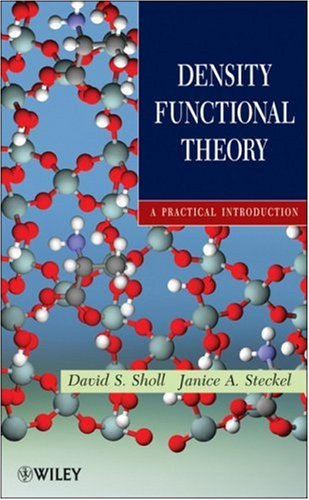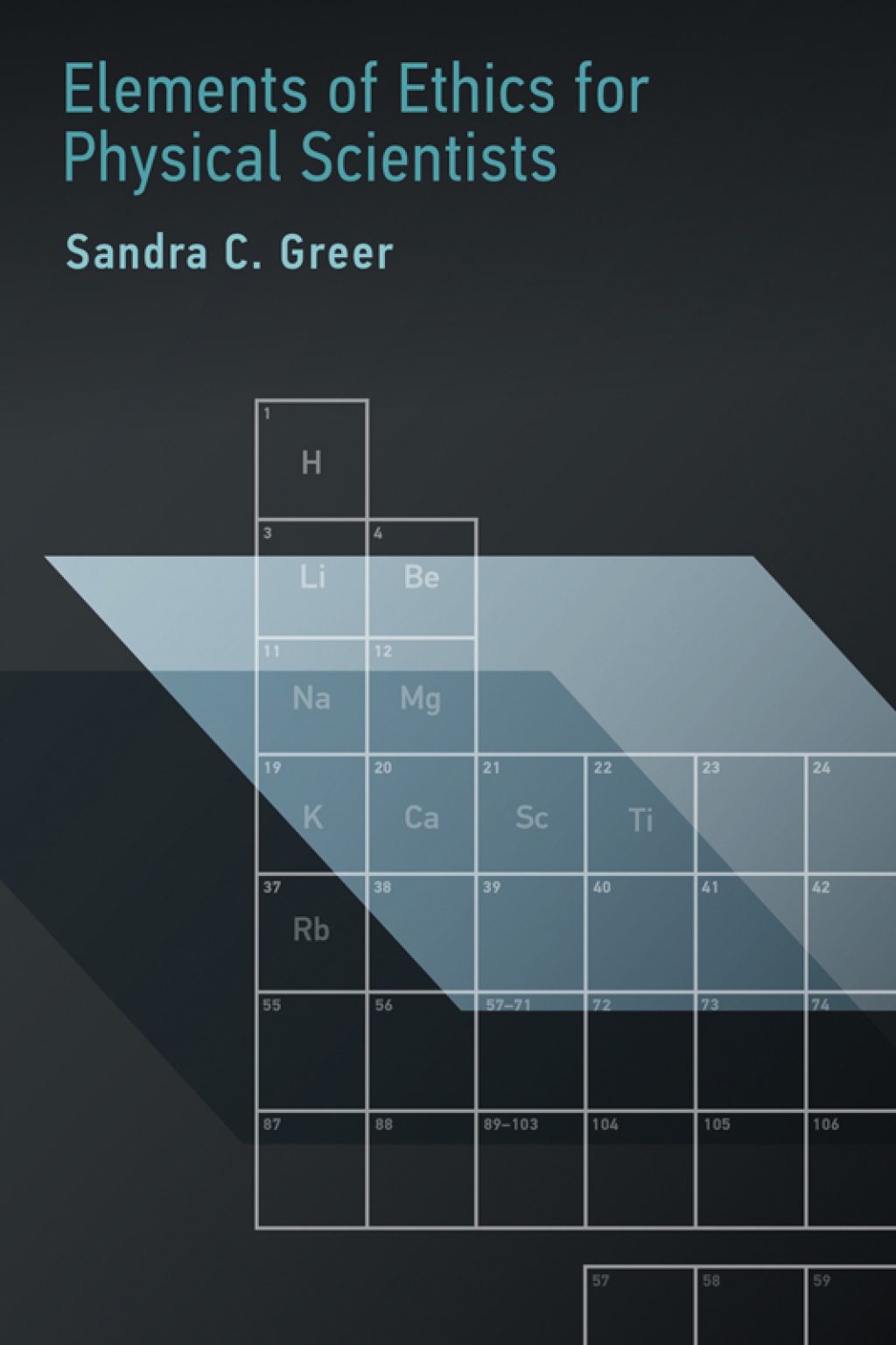David Sholl, Janice A Steckel0470373172, 9780470373170
Density functional theory (DFT) is one of the most frequently used computational tools for studying and predicting the properties of isolated molecules, bulk solids, and material interfaces, including surfaces. Although the theoretical underpinnings of DFT are quite complicated, this book demonstrates that the basic concepts underlying the calculations are simple enough to be understood by anyone with a background in chemistry, physics, engineering, or mathematics. The authors show how the widespread availability of powerful DFT codes makes it possible for students and researchers to apply this important computational technique to a broad range of fundamental and applied problems.
Density Functional Theory: A Practical Introduction offers a concise, easy-to-follow introduction to the key concepts and practical applications of DFT, focusing on plane-wave DFT. The authors have many years of experience introducing DFT to students from a variety of backgrounds. The book therefore offers several features that have proven to be helpful in enabling students to master the subject, including:
Table of contents :
DENSITY FUNCTIONAL THEORY……Page 4
CONTENTS……Page 8
Preface……Page 14
1.1 How to Approach This Book……Page 16
1.2.1 Ammonia Synthesis by Heterogeneous Catalysis……Page 17
1.2.2 Embrittlement of Metals by Trace Impurities……Page 19
1.2.3 Materials Properties for Modeling Planetary Formation……Page 21
1.3 The Schrödinger Equation……Page 22
1.4 Density Functional Theory—From Wave Functions to Electron Density……Page 25
1.5 Exchange–Correlation Functional……Page 29
1.6.1 Localized and Spatially Extended Functions……Page 31
1.6.2 Wave-Function-Based Methods……Page 33
1.6.3 Hartree–Fock Method……Page 34
1.6.4 Beyond Hartree–Fock……Page 38
1.7 What Can DFT Not Do?……Page 43
1.9 How to Approach This Book (Revisited)……Page 45
References……Page 46
Further Reading……Page 47
2.1 Periodic Structures, Supercells, and Lattice Parameters……Page 50
2.2 Face-Centered Cubic Materials……Page 54
2.3 Hexagonal Close-Packed Materials……Page 56
2.4 Crystal Structure Prediction……Page 58
2.5 Phase Transformations……Page 59
Exercises……Page 61
Appendix Calculation Details……Page 62
3 Nuts and Bolts of DFT Calculations……Page 64
3.1.1 Plane Waves and the Brillouin Zone……Page 65
3.1.2 Integrals in k Space……Page 68
3.1.3 Choosing k Points in the Brillouin Zone……Page 70
3.1.4 Metals—Special Cases in k Space……Page 74
3.1.5 Summary of k Space……Page 75
3.2 Energy Cutoffs……Page 76
3.2.1 Pseudopotentials……Page 78
3.3.1 Optimization in One Dimension……Page 80
3.3.2 Optimization in More than One Dimension……Page 84
3.4 DFT Total Energies—An Iterative Optimization Problem……Page 88
3.5.1 Internal Degrees of Freedom……Page 90
3.5.3 Optimizing Supercell Volume and Shape……Page 93
Exercises……Page 94
Further Reading……Page 95
Appendix Calculation Details……Page 96
4.1 Importance of Surfaces……Page 98
4.2 Periodic Boundary Conditions and Slab Models……Page 99
4.3 Choosing k Points for Surface Calculations……Page 102
4.4 Classification of Surfaces by Miller Indices……Page 103
4.5 Surface Relaxation……Page 109
4.6 Calculation of Surface Energies……Page 111
4.7 Symmetric and Asymmetric Slab Models……Page 113
4.8 Surface Reconstruction……Page 115
4.9 Adsorbates on Surfaces……Page 118
4.9.1 Accuracy of Adsorption Energies……Page 121
4.10 Effects of Surface Coverage……Page 122
Exercises……Page 125
Further Reading……Page 126
Appendix Calculation Details……Page 127
5 DFT Calculations of Vibrational Frequencies……Page 128
5.1 Isolated Molecules……Page 129
5.2 Vibrations of a Collection of Atoms……Page 132
5.3 Molecules on Surfaces……Page 135
5.4 Zero-Point Energies……Page 137
5.5 Phonons and Delocalized Modes……Page 142
Further Reading……Page 143
Appendix Calculation Details……Page 144
6 Calculating Rates of Chemical Processes Using Transition State Theory……Page 146
6.1 One-Dimensional Example……Page 147
6.2 Multidimensional Transition State Theory……Page 154
6.3 Finding Transition States……Page 157
6.3.1 Elastic Band Method……Page 159
6.3.2 Nudged Elastic Band Method……Page 160
6.3.3 Initializing NEB Calculations……Page 162
6.4 Finding the Right Transition States……Page 165
6.5 Connecting Individual Rates to Overall Dynamics……Page 168
6.6.1 High Temperatures/Low Barriers……Page 171
6.6.3 Zero-Point Energies……Page 172
Exercises……Page 173
Further Reading……Page 174
Appendix Calculation Details……Page 175
7 Equilibrium Phase Diagrams from Ab Initio Thermodynamics……Page 178
7.1 Stability of Bulk Metal Oxides……Page 179
7.1.1 Examples Including Disorder—Configurational Entropy……Page 184
7.2 Stability of Metal and Metal Oxide Surfaces……Page 187
7.3 Multiple Chemical Potentials and Coupled Chemical Reactions……Page 189
Exercises……Page 190
Further Reading……Page 191
Appendix Calculation Details……Page 192
8.1 Electronic Density of States……Page 194
8.2 Local Density of States and Atomic Charges……Page 201
8.3 Magnetism……Page 203
Exercises……Page 205
Further Reading……Page 206
Appendix Calculation Details……Page 207
9.1.1 Molecular Dynamics with Constant Energy……Page 208
9.1.2 Molecular Dynamics in the Canonical Ensemble……Page 211
9.1.3 Practical Aspects of Classical Molecular Dynamics……Page 212
9.2 Ab Initio Molecular Dynamics……Page 213
9.3.1 Exploring Structurally Complex Materials: Liquids and Amorphous Phases……Page 216
9.3.2 Exploring Complex Energy Surfaces……Page 219
Further Reading……Page 222
Appendix Calculation Details……Page 223
10.1 How Accurate Are DFT Calculations?……Page 224
10.2 Choosing a Functional……Page 230
10.3.1 Benchmark Calculations for Molecular Systems—Energy and Geometry……Page 235
10.3.2 Benchmark Calculations for Molecular Systems—Vibrational Frequencies……Page 236
10.3.3 Crystal Structures and Cohesive Energies……Page 237
10.3.4 Adsorption Energies and Bond Strengths……Page 238
10.4 DFT+X Methods for Improved Treatment of Electron Correlation……Page 239
10.4.1 Dispersion Interactions and DFT-D……Page 240
10.4.2 Self-Interaction Error, Strongly Correlated Electron Systems, and DFT+U……Page 242
10.5 Larger System Sizes with Linear Scaling Methods and Classical Force Fields……Page 244
10.6 Conclusion……Page 245
References……Page 246
Further Reading……Page 247
Index……Page 250







Reviews
There are no reviews yet.